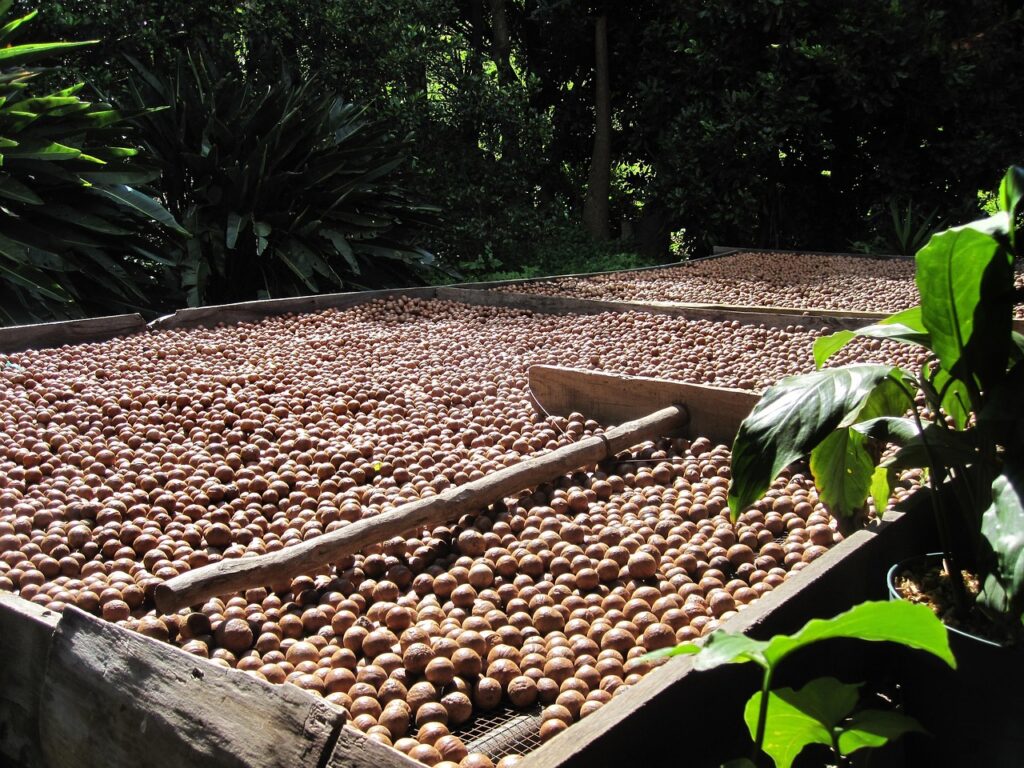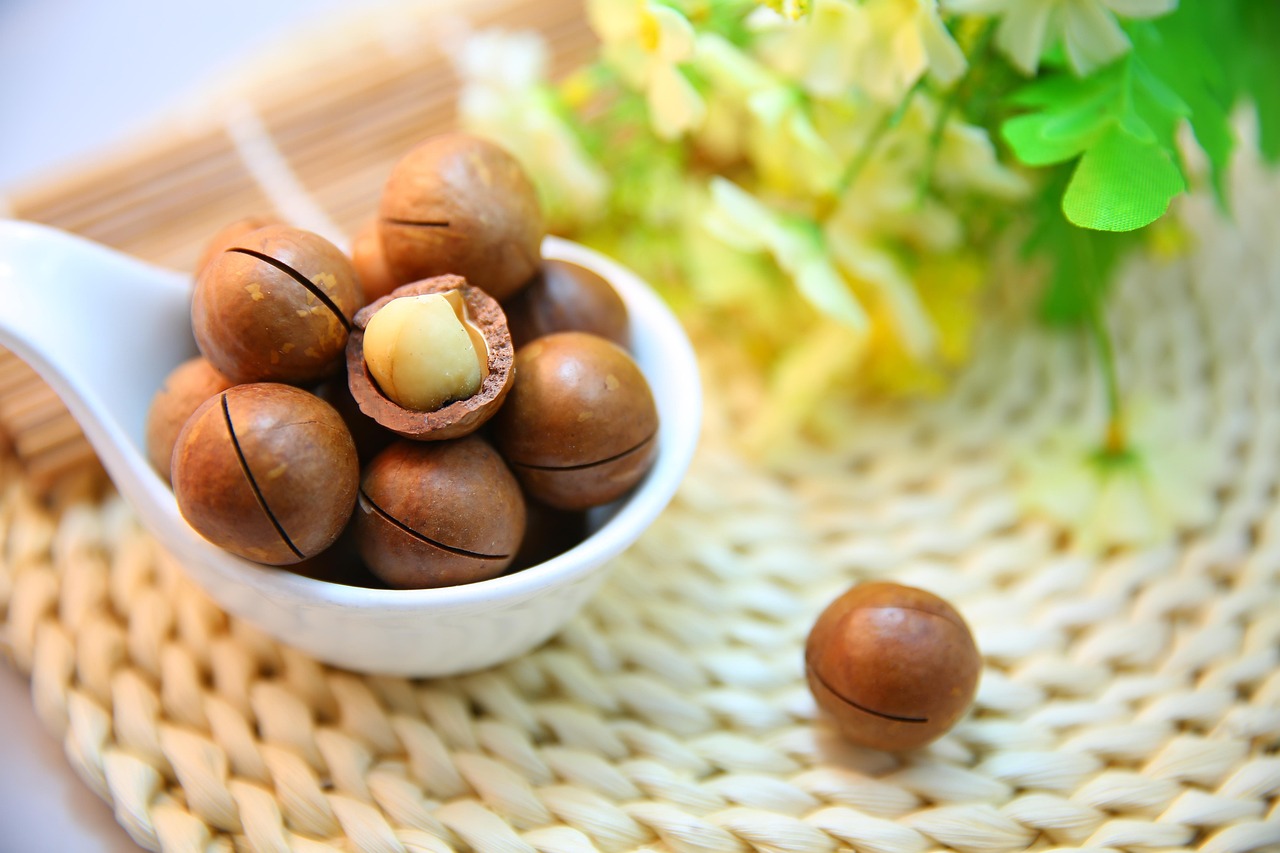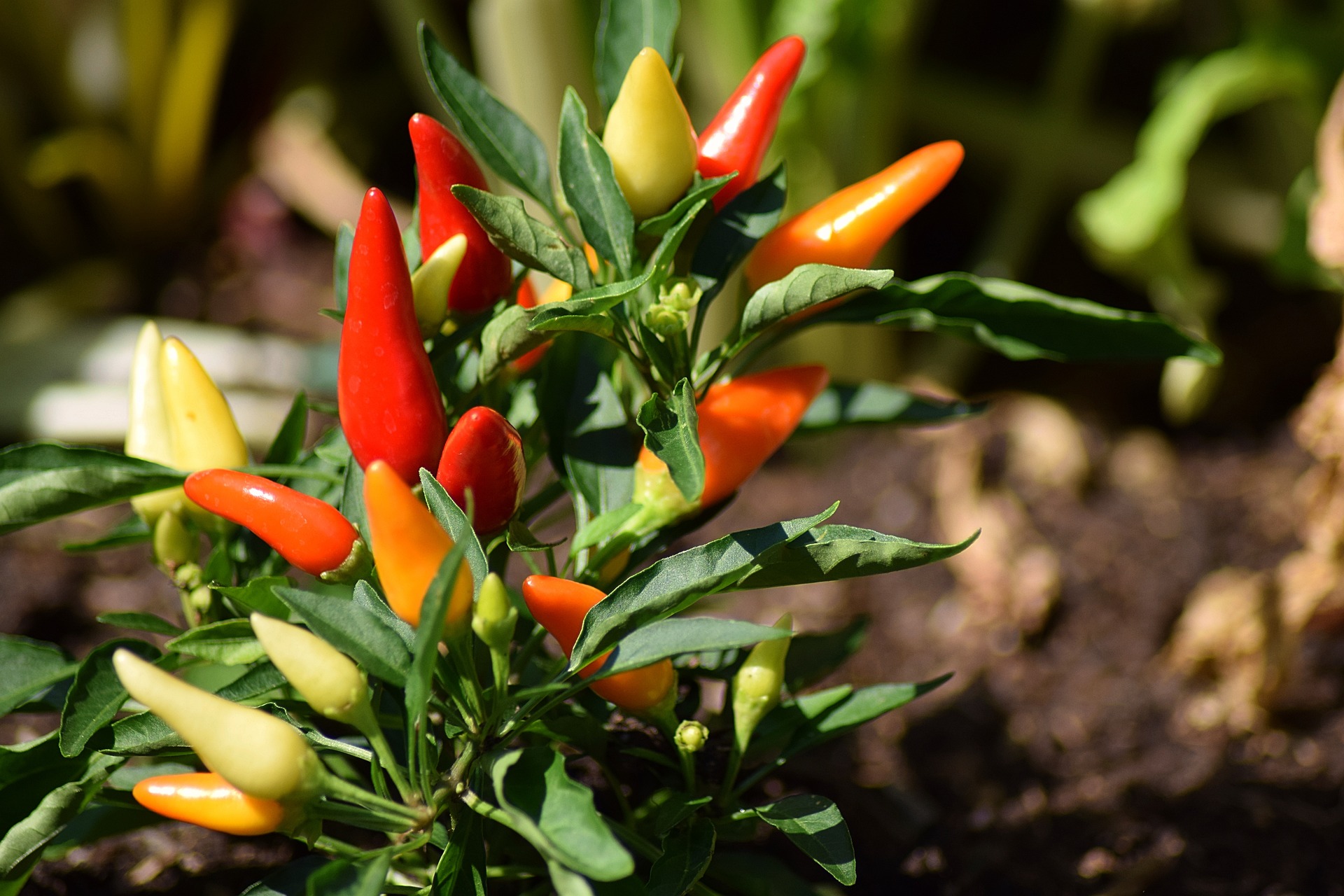The Secret of the Shell: Why Is It So Hard?
Macadamia nuts (Macadamia integrifolia and related species) are beloved worldwide for their rich flavor and high nutritional value. Yet, before enjoying the delicious kernel, one must overcome what is often called “the hardest nutshell in the world.” This remarkable hardness is not a coincidence but a product of evolutionary design, confirmed by botanical and materials science studies. Research shows that the inner shell is densely reinforced with lignin and multiple layers of tightly interwoven cellulose fibers. This combination makes it far stronger than wood or other nut shells, functioning as a natural composite material. Moreover, microscopic analysis has revealed that the shell cells are arranged randomly rather than in neat patterns. This randomness disperses external forces from all directions, preventing cracks from propagating. Mechanical tests confirm crushing strengths exceeding 200–300 kg/cm², far surpassing almonds or walnuts. These results highlight the macadamia nutshell as one of nature’s most impressive defensive structures (Liang et al., 2021).
Ecological Significance: Defense and Seed Dispersal
The hardness of macadamia nutshells represents a sophisticated evolutionary strategy. Native to Australia, macadamias face predation from birds, rodents, and even insects. A thin or soft shell would leave seeds vulnerable to overconsumption, drastically reducing reproduction. Instead, macadamias evolved an extremely rigid “physical barrier” that deters most predators. At the same time, the shell is not impenetrable; certain strong-beaked birds such as cockatoos can still break it open. This selective access creates a form of “ecological filtering,” ensuring that only a few species can disperse the seeds. Thus, the macadamia’s survival strategy lies in balancing protection with effective dispersal. From an evolutionary ecology perspective, this dual function is a refined adaptation that illustrates how plants negotiate between predation pressure and reproduction.
(For a related example, see how capsaicin in chili peppers evolved as a selective deterrent.)
Applications of Hard Shells: Lessons for Biomimetics
As a Plant hack example, let’s look at the applied research into macadamia nutshells. These shells represent a natural model of high-strength biomaterials, drawing significant interest from engineering and biomimetics. Recent studies have mimicked the microscopic architecture of the shells to develop next-generation protective materials such as bulletproof composites and high-performance resins. Their interwoven, fiber-like microstructure absorbs and disperses impact energy, making them exceptionally resistant to fracture. Importantly, the combination of high fracture toughness and flexibility has inspired designs for aerospace and automotive components that require both lightness and durability. Biomimetic research also investigates shell-inspired layered ceramics and improved fiber-reinforced plastics. Even in consumer applications, potential uses include shock-resistant containers and safer helmets. In short, macadamia nutshells are far more than a food byproduct—they act as a blueprint for new materials and industrial design (Chen et al., 2019).
Practical Note: How to Crack and Enjoy Them
That said, when it comes to actually eating macadamias, the hardest challenge is breaking the shell. Ordinary nutcrackers fail, and hammering them can cause dangerous shell fragments to fly. The safest and most effective method is to use a dedicated macadamia nutcracker. These tools are designed to match the nut’s shape and hardness, applying steady pressure along the seam so that the shell splits cleanly without damaging the kernel. Cracking your own macadamias can be surprisingly satisfying, adding ritual to the enjoyment.
Once cracked, macadamias can be eaten raw, but roasting enhances their buttery flavor and aroma. They also pair beautifully with chocolate, cookies, and baked goods. In savory dishes, they make excellent salad toppings or crusts for fish, adding crunch and nutrition. Thus, opening the shell unlocks not only the nut itself but also a wide range of culinary possibilities.
Conclusion: The Wisdom of Hard Shells
Macadamia nuts hide nutrient-rich kernels behind their remarkably strong shells. The kernels are packed with heart-healthy monounsaturated fats such as oleic and palmitoleic acids, which support cardiovascular health and provide antioxidant benefits. Their buttery flavor, combined with these nutritional properties, earns macadamias their reputation as a “luxury nut.”
At the same time, their shell represents an evolutionary masterpiece—an ingenious blend of plant defense, ecological strategy, and natural materials science. In daily life, dedicated cracking tools make them safe and enjoyable, while in research and industry the shells inspire the creation of new biomimetic materials. Taken together, macadamias are not just a delicacy but a testament to nature’s wisdom, offering both scientific insights and everyday benefits.
Accessible through online marketplaces, whole macadamias let you experience both the challenge of cracking and the reward of savoring them fresh. It’s an experience that combines taste, health, and a connection to natural design.

References
- Liang et al. (2021). “Mechanical properties and failure mechanisms of macadamia nutshells”. Materials & Design.
- Chen et al. (2019). “Bioinspired design of tough composites based on macadamia nutshells”. Advanced Materials.




コメント